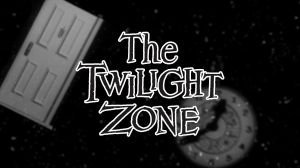Horror movies have always served as opportunities to explore real-world fears through heightened situations. After the slashers and teen-oriented terrors of the ’80s and ’90s, followed by the boom of found-footage and gore-focused experiences in the 2000s, the 2010s served as a return to form in reflecting societal anxieties. Movies like The Babadook, Get Out, or It Follows were considered revolutionary for having deeper themes than just superficial scares, resulting in the (embarrassingly named) trend of “elevated horror.” With Michael Shanks’s Together, fans are given the best of both worlds: an unsettling allegory for codependency and toxic relationships as well as a goopy, cringeworthy body-horror experience.
Videos by ComicBook.com
Thanks to an all-new job opportunity, Millie and Tim (real-life spouses Alison Brie and Dave Franco, who also serve as producers) move from the city to a more rural area, closer to schools where Millie can form stronger relationships with her students, though this puts them further from gigs that might advance Tim’s musical career. Exploring their local forest, the pair falls into a mysterious cavern, causing them to bond with one another to get through the night. Despite escaping this cavern, their bond starts developing into something a lot more literal, with the pair becoming the unexpected targets of bizarre forces.
Shanks, who also wrote the film, has been outspoken about how the film was inspired by his own relationship with his wife. Casting real-life partners Brie and Franco as the pair trying to overcome their struggles was a masterstroke, as they not only have a seemingly effortless chemistry, but there are also glimmers of history and tension that only longterm partners experience injected into each scene.
Before a single otherworldly thing happens in the movie, audiences witness the variety of personal, professional, and emotional ways that these two aren’t on the same page; Tim is still reeling over the death of his parents, and while Millie’s ambitions might seem more mundane to him, these career-oriented decisions could be considered more stable. Between unexpected propositions in front of friends, casually (and accidentally?) claiming to be trapped, or prioritizing the well-being of a phone over their partner, Shanks, Brie, and Franco organically and authentically plant the seeds of the couple’s disconnect, making these tensions nearly as anxiety-inducing as anything more horrific that happens later on.
The trio of creatives could have entirely explored this more allegorical angle of the premise throughout the run time and made for an entirely entertaining movie, yet the story does escalate later in the third act to confirm that there’s a lot more to this situation than the manifestation of resentment. We won’t dive too deeply into the more unsettling sequences in the movie, but the subtext becomes the text and this pair can’t seem to find their own way in life, resulting in a variety of unsettling visual manifestations of these struggles. The absurdity of the situation is tonally reflected by dipping its toe into the realm of a satirical black comedy and not only being outright horror, which is a credit to Shanks’s script and tonal control over the experience.
One reason why horror is such an effective exploration of personal, real-world fears is that, by witnessing the way events unfold, audiences must confront how they would handle similar situations. What complicates matters in Together, for better or worse, is that, while we know that Millie and Tim might not be quite right for each other, it’s difficult to determine whether their fate is ultimately good or ultimately bad. Any viewer who’s ever been in a relationship can relate to some element of their dynamic, no matter how mundane or how significant those elements might be. There’s no doubt that Together will have viewers recontextualizing their own relationships, but with the first half being the more allegorical perspective and the back half being a bit more literal, it’s difficult to deduce what Shanks, Brie, and Franco are all trying to say about similar relationships as a whole. This could, in fact, be the whole point of the movie, to present these questions without offering answers, and while this does result in a thought-provoking viewing, audiences will be left with a frustrating conclusion that denies us answers. It’s also worth noting that the film intentionally denies giving us answers to the more mythological, narrative elements of the situation, yet we’re given just enough to pique our curiosity without spoon-feeding us unnecessary answers.
With Together marking his feature directorial debut, Shanks seems to have blended together multiple components of fan-favorite genre efforts into an all-new concoction. We get the tension of a toxic companionship from Midsommar mixed with the contained paranoia of Bug and heaping helpings of body horror akin to any Cronenberg effort, John Carpenter’s The Thing, and, more specifically, Brian Yuzna’s Society. Well-versed horror fans might pick up on these influences, but Together never really feels derivative of any of these experiences, as the effective display of those themes serves as a reminder of the impressive execution of its predecessors.
Shanks may have effectively executed the ambitious task of balancing allegorical and literal threads throughout the narrative, though part of what holds the movie back is the depictions of the more monstrous physical transformations. Audiences will appreciate the handful of times we’re given practical effects and puppetry work, though the nature of the concept required a reliance on CGI, with these scenes being theoretically unnerving despite looking visually messy. One scene that will initially excite but ultimately frustrate fans is the build-up of how a reciprocating saw could be used in a brutal manner, yet we’re denied the actual carnage of such an act.
This isn’t to say that Shanks fell short of expectations in crafting fright-inducing sequences, as he actually manages to deliver quite a few. The opening scene, in particular, is entirely effective with only a few minutes and virtually no dialogue, while other nightmarish sequences and glimpses of the body doing discomforting things all work. It’s Shanks’s talents at building tension and suspense in effective ways that makes the sequences in which he doesn’t fully pay off the expectation feel more frustrating, as he clearly has the talent, though for some reason doesn’t always stick the landing.
Even if Together isn’t an outright triumph, it’s still an impressive debut from Shanks, as he and collaborators Brie and Franco pull off the challenging task of delivering an experience that’s both squirm-inducing and thought-provoking. Fans are welcome to either accept all of the superficial scariness and leave the adventure behind them once the credits roll, or they can question their own interpersonal connections, whether they wanted to or not. If this is just the start of Shanks’s big-screen career, we’re already waiting with bated breath to see how he tops himself.
Rating: 4 out of 5
Together lands in theaters on July 30th.








